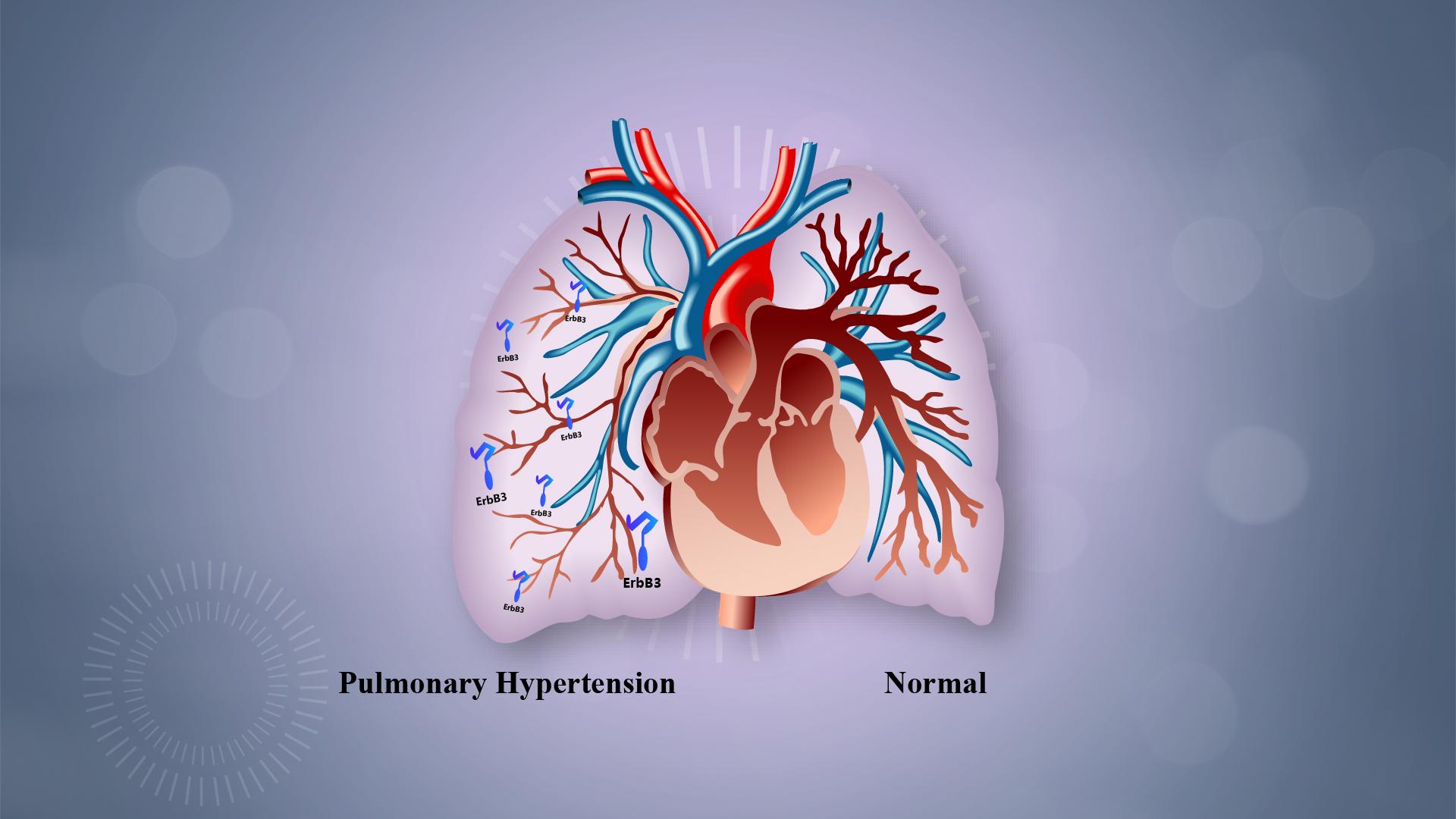Pulmonary hypertension (PH) is a severe and progressive lung disease characterized by pathological remodeling of small pulmonary arteries, which leads to increased pulmonary vascular resistance and, ultimately, right ventricular failure and death. Without effective treatment, about half of patients may die within 2-3 years.
Despite recent advances in the pathogenesis and treatment of PH, none of the current treatment strategies cure this devastating disease. Therefore, the identification and characterization of new targets in PH development and progression is an urgent requirement.

Professor Jinsong Bian’s research group from the Department of Pharmacology at the Southern University of Science and Technology (SUSTech) has recently collaborated with Associate Professor Xiaowei Nie’s research group from the Shenzhen Institute of Respiratory Diseases at the First Affiliated Hospital of SUSTech (Shenzhen People’s Hospital) to reveal that ErbB3, a member of EGF receptors, contributes to the vascular remodeling in the development of PH. More importantly, the researchers reported that the serum ErbB3 may serve as a biomarker of this disease.
Their study, entitled “ErbB3 Governs Endothelial Dysfunction in Hypoxia-Induced Pulmonary Hypertension”, has been published in the top cardiovascular journal Circulation.
The two groups previously reported that Periostin, an extracellular matrix protein, interacted with hypoxia-inducible factor (HIF)-1/2α to contribute to the development of vascular remodeling in 2020 in Circulation Research. The present study further revealed that ErbB3 may form a positive loop with the above two proteins and accelerate the progression of PH.
Interestingly, the researchers found that serum ErbB3 may not only serve as a biomarker for PH, but also produce biological functions by forming dimmers with other members of the EGFR family.
This study provides a novel therapeutic target against vascular remodeling. The findings from this study may help scientists to develop a new therapeutic strategy to treat PH and create a clinical applicable serum biomarker to reflect the extent and prognosis of this disease.
Professors Jinsong Bian and Jinyu Chen are the co-first authors of the paper, and Associate Professor Xiaowei Nie is the corresponding author.
This work was supported by the National Natural Science Foundation of China (NSFC), Shenzhen Excellent Science and Technology Innovation Talent Development Programme, and the Shenzhen Science Fund for Distinguished Young Scholars.
Paper link: https://www.ahajournals.org/doi/abs/10.1161/CIRCULATIONAHA.123.067005
Proofread ByAdrian Cremin, Yingying XIA
Photo ByYan QIU